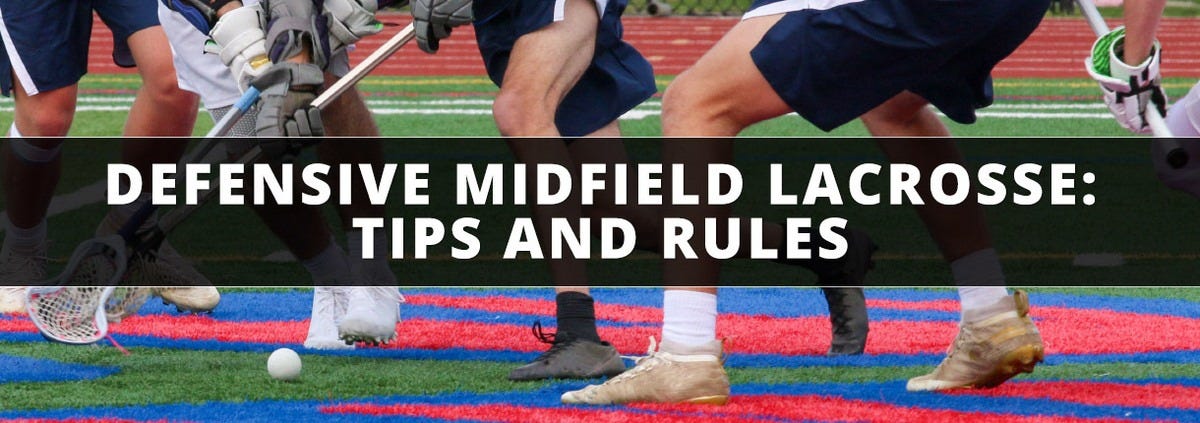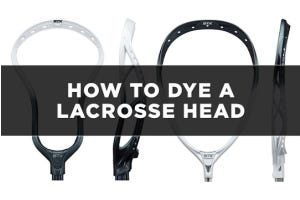Guide to Defensive Midfielder Position in Lacrosse

In lacrosse, the role of a defensive midfielder is a crucial one, often serving as the unsung hero on the field. In this article, we'll delve into the realm of defensive midfielders, exploring what they are, what they do, and the rules governing their play in lacrosse. If you're curious about how to excel as a defensive middie or you're on the hunt for the best lacrosse sticks tailored for this position, you're in the right place. We'll also address some frequently asked questions about defensive midfielders in lacrosse. To discover a wide range of options for midfield sticks, check out our full selection. To see more options, check out our full selection of midfield sticks.
In lacrosse, a defensive midfielder, often known as a "defensive middie," plays a crucial and versatile role on the field. This player serves between defense and offense, with primary responsibilities including defensive support, preventing the opposing team from scoring, and facilitating the transition from defense to offense. Defensive midfielders are characterized by their physicality, endurance, and well-rounded skill set. They excel in ground ball battles, key for gaining possession and controlling the game's tempo. Additionally, they play a vital role in clearing the ball from their team's defensive zone, initiating fast breaks, and disrupting the opponent's offensive plays. While their primary focus is on defense, defensive midfielders are adaptable, and capable of contributing to offensive plays when opportunities arise, making them invaluable assets to their teams and often unsung heroes on the field.
The defensive middie role encompasses a wide range of responsibilities, including providing crucial defensive support by marking opposing players and disrupting offensive plays. They excel in ground ball battles, ensuring their team gains possession and controls the game's tempo. Additionally, defensive midfielders play a pivotal role in transitioning the ball from defense to offense, often initiating fast breaks and facilitating a smooth shift in gameplay. Their adaptability allows them to seamlessly switch between defensive and offensive roles, making them invaluable assets to their teams and unsung heroes on the lacrosse field.
Defensive midfielders in lacrosse are subject to the same fundamental rules as all players on the field. Their primary role revolves around supporting the defense, marking opposing players, and disrupting offensive plays to prevent goals. While engaging in physical play is part of their duties, defensive midfielders must adhere to rules governing legal checks, avoiding unnecessary roughness or illegal physical contact. Additionally, they must follow the rules related to ground ball battles, ball possession during transitions, and offensive offside infractions. Defensive midfielders should also be vigilant in avoiding penalties such as slashing, tripping, or holding, as these infractions can result in time in the penalty box. Overall, their actions are guided by the same lacrosse rules as other players, with a focus on their defensive responsibilities.
Playing as a defensive midfielder, or "defensive middie," in lacrosse involves a combination of defensive and transition responsibilities. Here's how you play this role:
- Defense: Your primary role is to support the defense. This includes marking opposing players, disrupting their offensive plays, and preventing goals. Stay vigilant, communicate with your defensive teammates, and help defend your team's goal.
- Ground Balls: Engage in ground ball battles to gain possession for your team. Use your physicality and stick skills to scoop up loose balls, and ensure your team maintains control of the game's tempo.
- Transition Play: When your team gains possession, be ready to transition the ball from defense to offense. Carry the ball across midfield while adhering to rules related to ball possession and offside infractions.
- Physicality within Rules: While physical play is part of your role, adhere to the rules governing legal checks and physical contact. Avoid illegal actions, such as slashing or unnecessary roughness, that could result in penalties.
- Defensive Positioning: Maintain proper defensive positioning, helping to close gaps and prevent opposing players from getting quality scoring opportunities. Work with your defensive teammates to create a solid defensive unit.
- Clearing the Ball: Assist in clearing the ball from your defensive zone, ensuring it gets upfield to your offensive players. Help initiate fast breaks and support the transition game.
- Communication: Effective communication with your teammates is crucial. Keep your defensive unit coordinated, and communicate plays and strategies to facilitate a smooth transition game.
Overall, playing as a defensive middie in lacrosse requires a well-rounded skill set, physicality, and adaptability. Your ability to contribute both defensively and in transitioning the ball can greatly impact your team's success on the field.
When selecting a lacrosse stick as a defensive midfielder, prioritize a head design that strikes a balance between defensive capabilities and versatility. Look for a wider head that offers better ball control for ground balls and checks. Additionally, consider a durable shaft material, such as sci-ti or composite.
Can midfielders go anywhere in lacrosse?
Yes, midfielders play on both sides of the field. This means a midfielder must be the most versatile player on the field.
What is a short stick defensive middie?
A short-stick defensive midfielder in lacrosse is a player who uses a midfield-sized lacrosse stick, to fulfill defensive responsibilities. These players are known for their agility and adaptability on the field, making them key contributors to both defensive and transition play.
How do you position yourself as a defensive midfielder?
Positioning as a defensive midfielder in lacrosse, with a focus solely on defense, involves maintaining a strong defensive stance. Ensure you are positioned between the opposing attackers and your goal, limiting their scoring opportunities by closely marking your assigned opponent. Communicate effectively with your defensive teammates, including long-stick defenders and the goalkeeper, to coordinate defensive strategies and close gaps to prevent the opposing team from getting open shots. Your primary role is to provide a solid defensive presence, disrupt offensive plays, and protect your team's goal.
Find the Best Selection of Defensive Middie Sticks at Lacrosse Monkey!
For the best selection of defensive midfielder sticks, visit Lacrosse Monkey! We offer a wide range of lacrosse gear, including sticks tailored to the needs of defensive middies. Whether you prefer a shorter or longer stick, we have options that suit your playing style. Explore our selection to find the perfect defensive middie stick to enhance your performance on the lacrosse field.








